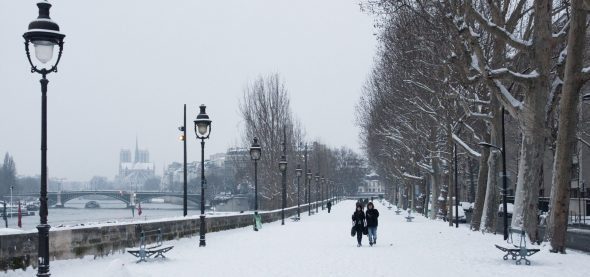As expected, France was heavily dependent on power imports during the first cold spell of this winter. Yet, most of the country’s reactors are back online. The US is now also investigating 17 reactors with parts from France that could also be defective. Craig Morris has the details.

In the fall of 2016, 20 of France’s 58 reactors were offline, largely for inspections. As of mid-January, most of these reactors were back online, however. The fleet’s total generation capacity is 63 GW, and RTE’s website shows an ouput level approaching 55 GW, which is near the maximum (power plants generally do not run far above 90% so they can still provide grid services, such as reactive power). EDF’s list of production by plant (zip) on January 11 seems to show that 7 reactors are still offline, which is not an especially high number (only 15 percent of the fleet).
The risk is that France gets a lot of its space heat from electric units, so a cold spell poses a challenge, as we saw in 2012, when Germany helped prevent a blackout in France.

Europe got its first cold spell this winter in the first week of January. During that week, France was only a net exporter of power for three brief periods, each at around 4 am, when demand in France and neighboring countries is lowest. Otherwise, France was a net power importer, peaking at 8 GW (roughly 10 percent of around 8 am on Friday, January 6), as shown by the grey area at the top of the chart below. France has a total import capacity of 12,200 MW (in German) from all of its neighbors, so there is room for greater power imports, but four megawatts is not much relative to the potential for twenty gigawatts of greater demand to reach the record level during the 2012 cold spell.

France only has 3,007 MW of coal installed, so it’s coal fleet was also running practically full blast, along with gas, listed at 10,909 MW, just above the 9,181 MW the chart indicates above. The oil-fired capacity is much greater than the 1,100 MW generated, however, at 8,645 MW – so clearly, France has lots more generation capacity, but imports are cheaper than domestic production from oil.
Price comparison
The chart below shows the price difference between Germany and France in the first week of the year, as shown above. The gap is most striking on Wednesday for peak power, with France paying 7.2 cents and Germany 3.8 for a kilowatt-hour.

The chart below shows the power trading situation for that week situation with all countries bording France. Belgium and Germany are unfortunately now lumped together (they were reported separately until last year), thereby making it impossible to say how much came from which country. But clearly, France is reliant on its neighbors during cold spells – initially, because imports are cheaper than power from oil. But the French don’t have that much reserve capacity left if the reactors cannot stay online, and the French nuclear watchdog ASN says it wants to investigate further.

The US is now also reviewing the safety of 17 reactors of 99 in operation in the country with parts from Areva, the manufacturer of the defective equipment made at the Le Creusot facility. Areva is to receive a “capital injection” to the tune of 4.5 billion euros from the French state; the EU approved the deal as compliant with state aid guidelines on Tuesday.
Craig Morris (@PPchef) is the lead author of Global Energy Transition. He is co-author of Energy Democracy, the first history of Germany’s Energiewende, and is currently Senior Fellow at the IASS.
Source: Energy Transition. Reproduced with permission.








